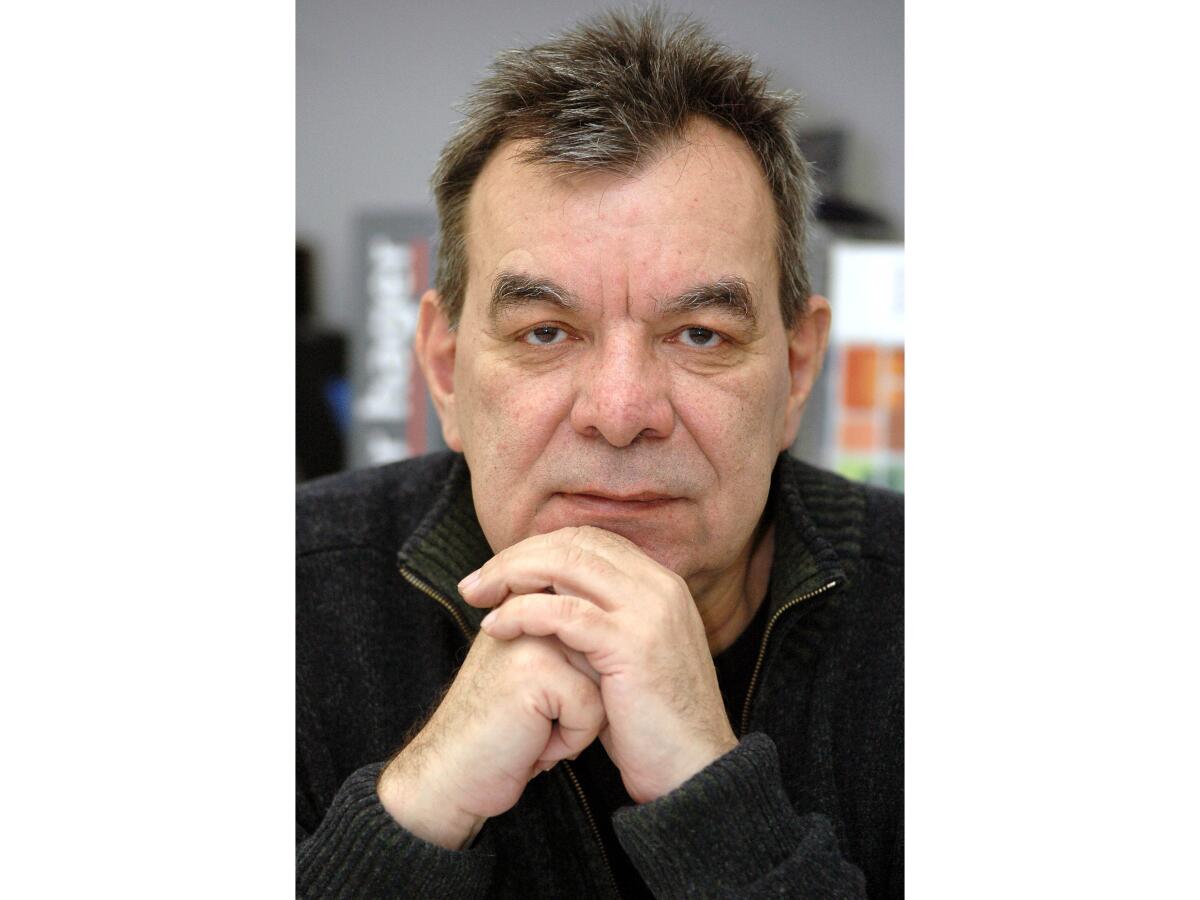Laszlo Rajk, Hungarian architect, film designer and political dissident, dies at 70

- Share via
BUDAPEST, Hungary — Laszlo Rajk, a Hungarian architect, dissident and film and theater production designer, has died. He was 70.
Rajk died Wednesday from an undisclosed illness, according to the online architecture publication epiteszforum.
Rajk, born in Budapest on Jan. 26, 1949, shared the name Laszlo with his father, a communist interior minister who was executed in 1949 after an infamous Stalinist show trial during the early days of Hungary’s communist regime. Rajk hadn’t yet celebrated his first birthday when his father was killed.
After his mother, Julianna Foldi, was imprisoned for allegedly supporting her husband’s “subversive” work, the young Rajk spent several years in state care. He was temporarily given a new name, and returned to his mother after her 1954 release.
As an avant-garde architect in the 1970s, he became involved in Hungary’s dissident movement. Rajk later helped publish and distribute underground “samizdat” publications. The publications carried articles on taboo subjects like the 1956 anti-Soviet revolution, and sociological and economic studies intended to give a clearer picture of Hungarian reality than the one appearing in state-censored newspapers and magazines.
Rajk turned his own home into a “samizdat boutique,” where issues of the clandestine journals could be purchased.
He was blacklisted in 1981 by Hungary’s communist regime and mostly banned from working under his own name for a decade.
The same year, he co-founded AB Fuggetlen Kiado, an independent publisher of mostly Hungarian and Eastern European dissident authors but also works by anti-authoritarian writers like George Orwell or those writing about the region like British historian Timothy Garton Ash.
Miklos Haraszti, a fellow high-profile dissident, said Rajk was a “pioneer” in the launch and strengthening of Hungary’s democratic opposition.
“Rajk was a pioneer in making Hungary the second-strongest country, after Poland, in the production and dissemination of opposition ideas,” Haraszti said. “It was his authority, enterprise, diligence and talent which guaranteed their continued existence.”
He was a founding member of the Alliance of Free Democrats and elected to parliament in 1990 after the fall of communism.
Rajk remained a lawmaker until 1996, resigning after some members of his party were involved in a corruption scandal.
Along with Gabor Bachman, he designed the striking backdrop used for the 1989 ceremony at Heroes Square to rebury the executed leaders of the 1956 anti-Soviet revolution, a key event on the road of Hungary’s return to democracy.
His likely best known — if aesthetically much criticized — architectural design is the market hall at Budapest’s Lehel Square.
Rajk also worked as a production designer or art director in dozens of films and theater productions. He was production designer for the Academy Award-winning “Son of Saul,” directed by Laszlo Nemes, which won the Oscar for best foreign language film in 2016.
He also worked as production designer on two films by Bela Tarr, “The Man From London” and “The Turin Horse,” and as an art director for Ridley Scott’s “The Martian.”
Rajk, a member of Hungary’s Szechenyi Academy of Letters and Arts, won numerous national and international awards for his political and design work.
Rajk is survived by his wife, Judit, a renowned concert singer.
More to Read
Start your day right
Sign up for Essential California for the L.A. Times biggest news, features and recommendations in your inbox six days a week.
You may occasionally receive promotional content from the Los Angeles Times.





